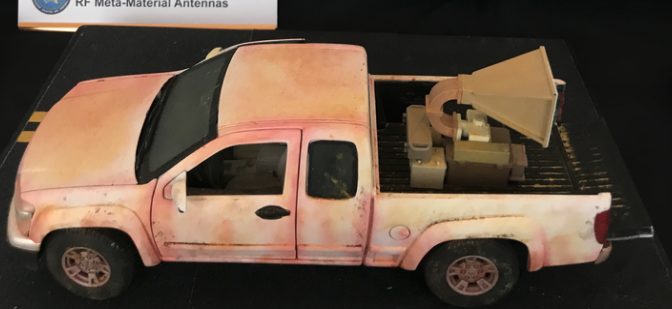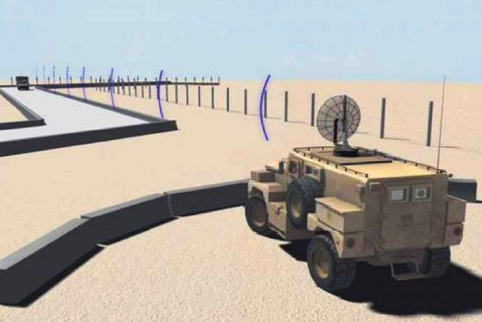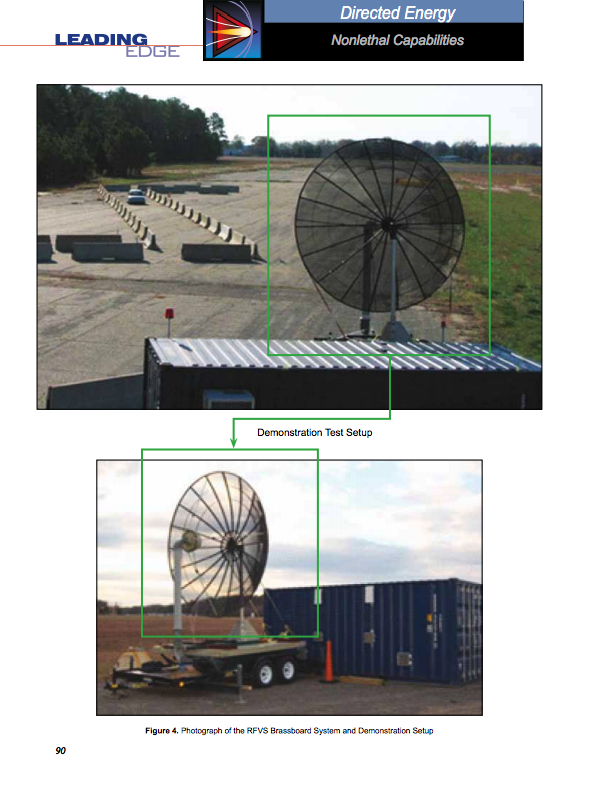The extensive use of vehicle-borne improvised explosive devices (VBIEDs) in the Middle East has resulted in a significant amount of military and civilian personnel being killed or injured. A new threat is quickly emerging in the West, as ten civilians were mowed down in a horrific van attack earlier this week in Toronto . Since 2014, Europe and North America have been inundated with terrorist led vehicle-ramming attacks against civilians.
According to Stratfor Global Intelligence, a vehicle-ramming attack is a new class of terrorism which is less lethal but could prove more challenging for officials to prevent.
Consequently, the Defense Department’s Joint Non-Lethal Weapons Directorate’s (JNLWD) top priority since the threat first appeared in the Middle East, has been to advance technologies and capabilities to non-lethally stop both cars, trucks, and even vessels.
One of these non-lethal technologies is the multifrequency Radio-Frequency (RF) Vehicle Stopper (RFVS), which uses a high-power microwave (HPM) to stop cars and trucks in their tracks without damaging the vehicle, or its occupants.
A miniature version of the ray gun to stop vehicle attacks, developed by JNLWD. (Source: Defense One 2018)
As Defense One explains, “The jammer works by targeting the car’s engine control unit causing it to reboot over and over, stalling the engine. Like an invisible hand, the microwaves hold the car in place. “Anything that has electronics on it, these high-powered microwaves will affect,” David Law, who leads JNLWD’s technology division, said in March. “As long as the [radio] is on, it holds the vehicle stopped.”
In a 2012 unclassified directed energy defense report, the inner workings of the RFVS are explained:
” The RFVS system uses high-power magnetron tubes to generate intense RF pulses that interfere with a vehicle’s electronics, rendering it temporarily inoperable. The engine cannot be restarted while the RF is on but is readily restarted once the RF is turned off. Thus, the RFVS system allows for the maintenance of a safe keep-out zone in situations that might otherwise require the use of lethal force. The defined measure of success for this system is a demonstrated, effective capability against more than 80% of the candidate target-vehicle-class list, which includes passenger cars and large vehicles.
As a nonlethal capability, the effects to the target vehicle are short-term and almost always reversible, so that the vehicle is not stranded, which would burden the warfighter with the task of its removal. Moreover, as with all directed-energy weapons, the RFVS system delivers energy at the speed of light. In contrast with other nonlethal vehicle stopping concepts and systems, however, RFVS does not need to be pre-emplaced and has a limitless magazine.”
Figure 1. Illustration of Candidate RFVS System Setup for Checkpoint Protection (Source: DTIC)
Figure 4. Photograph of the RFVS Brassboard System and Demonstration Setup (Source: DTIC)
Defense One indicates RFVS’s original intent was designed for military bases, but with the latest string of vehicle-ramming attacks in Europe and North America, there is a possibility that these ray guns could be placed strategically around cities — in the not too distant future.
“The military is developing the weapon for force protection — as in protecting soldiers and bases. But it has applications for police as well. Placed strategically around cities, it could prevent attacks like the ones in Europe, Canada, the United States, and elsewhere. There are, however, some tricky legal issues involved in using electronic and radio jamming devices in the United States.”
While the military aims to have a working prototype by Fiscal Year 2019, there are concerns about directed energy weapons. Take, for example, the electricity to operate the ray gun is a massive gasoline-powered turbine that generates 300 kilowatts of power. Even though the weapon has shrunk in size, the power-hungry device still requires lots of power.
Defense One notes that JNLWP has two versions of the non-lethal directed energy weapon, one that slides into a small truck bed with a range of about 50 meters and another three times larger with a range of about 200 meters.
In the not too distant future, directed energy weapons for non-lethal applications could be coming to a downtown near you, all in an attempt to thwart terrorist driven vehicle-ramming attacks against civilians.
Source Article from http://feedproxy.google.com/~r/blacklistednews/hKxa/~3/Pkad3DFlIwM/the-pentagons-ray-gun-can-stall-cars-trucks-with-radiation.html
 RSS Feed
RSS Feed















 April 29th, 2018
April 29th, 2018  Awake Goy
Awake Goy 


 Posted in
Posted in  Tags:
Tags: 













